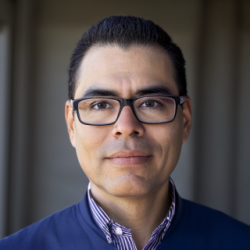The 66th annual meeting of the American Society of Hematology (ASH24) was packed with excellent abstracts and presentations on exciting discoveries and scientific advancements in the field of hematology. In addition to attending these educational seminars, my biggest accomplishment at ASH24 was networking and collaborating with brilliant classical hematologists from across the United States and forming our group of SHEROES (superhero women in classical hematology).
The term “classical hematology” has relatively recently been accepted as the best term to describe hematologists who treat a variety of conditions, such as patients with hemoglobinopathies (thalassemia and sickle cell disease), thrombotic and bleeding disorders, and disorders of platelet and WBC number and function. The previous term, “benign hematology,” may downplay the gravity of some of these potentially life-threatening conditions, for example, thrombotic thrombocytopenic purpura, which has a 90% mortality if not promptly treated.
ASH24 highlighted many important studies in the field of classical hematology. While listing all of them is beyond the scope of this article, I will mention the ones that I find most pertinent to me. Student doctor Wang presented an elegant oral abstract on how a ferritin cutoff of 25 mcg/L may be used as a threshold for women to start iron supplementation to prevent overt symptoms and development of anemia. Their group also showed that in women with severe iron deficiency anemia (hemoglobin <8g/dl), a single dose of intravenous (IV) iron dextran 1000 is the most cost-effective strategy with prompt resolution of anemia when compared with five doses of IV iron sucrose and with oral iron. In sickle cell disease, hydroxyurea titrated to maximum tolerable doses has the best efficacy in preventing transfusion dependence and improving patient cognitive outcomes. I particularly enjoyed the Ham Wasserman lecture, where Dr. Dipty Jain highlighted the establishment of the National Sickle Cell Elimination Mission in 2023, funded by the Indian government. This has secured funding for large-scale efforts for screening, treatment, and novel therapies for sickle cell disease patients in India, who tend to have moderate to severe phenotypes despite a high percentage of Hemoglobin F.
The plenary session showcased many groundbreaking abstracts, and I was most excited about the excellent results regarding rilzabrutinib in patients with refractory ITP presented by Dr. David Kuter. Drs. Middeldorp, Skeith, and colleagues highlighted in their education session the importance of screening menstruating women for iron deficiency and heavy menstrual bleeding while on anticoagulation (AC). That combined hormonal contraception (CHC) can be safely continued along with AC, in patients with venous thrombotic events provoked by CHC.
Beyond the opportunities for clinical education, ASH24 provided me with the opportunity to network with fellow classical hematologists. Team building has always been my strength. I enjoy meeting people and making connections. I am lucky to be a part of the Facebook group “Hematology/Oncology Women Physician Group” (which we affectionately refer to as the “Wolfpack”) — an online community of hematologists/oncologists who identify as women. I used this group to organize a meet-up for those interested in classical hematology. 20 classical hematologists, identifying as women who met during ASH, range from academic hematologists (both clinical researchers and experts in medical education) to community hematologists and those in private practice.
We know that the number of classical hematologists is dwindling, and my vision for this group is to develop a platform for those in the field to collaborate to develop ideas for multi-center research and quality improvement initiatives. Surveys have found that less than 5% of fellows training in hematology and oncology establish a career in classical hematology. Lack of mentorship has been cited as an important reason for this. Many trainees might be in programs that have very few classical hematology faculty. Virtual mentorship through ASH and other online platforms might provide a valuable resource for medical students and residents, as well as fellows who are looking into specializing in classical hematology.
Through SHEROES, I started an online resource for brainstorming and have shared access to a Google Drive with those who participated at ASH, as well as other interested women in classical hematology who could not attend our meeting. The participants will contribute ideas for collaborative research projects (clinical and related to quality improvement and systems hematology) and ideas for improving mentorship and advancing medical education opportunities in classical hematology. We also hope to expand our initiative to include medical trainees who may have an interest in careers in classical hematology as well as international participants (both trainees and practicing hematologists).
ASH has done an excellent job of promoting gender equity and inclusivity in hematology. I particularly enjoyed attending the mid-career networking dinner and the women in hematology (WIH) reception. These events provided a platform for physicians, trainees, pharmacists, and scientists who identify as women- to network and share inspiring life stories, as well as discuss negotiating leadership roles, and give examples of how they strive for healthy work-life integration.
For me, the benefits of ASH24 extended far beyond learning about groundbreaking research in hematology. ASH initiatives in diversity equity and inclusion, including work done by the WIH working group — help to foster a sense of belonging and a platform for making connections. I hope to contribute to the classical hematology community further through the SHEROES group. It truly takes a village to grow in hematology, and I am lucky that I found mine.
Drs. Khanna and Marshall have no conflicts of interest to disclose.
Image by Ponomariova_Maria / GettyImages






